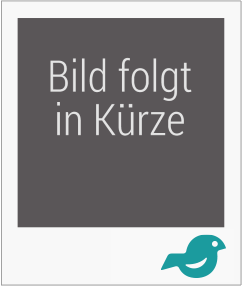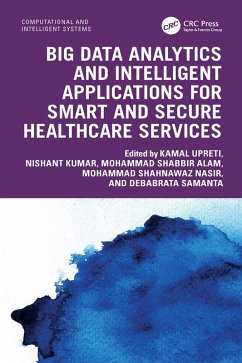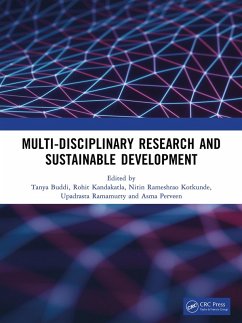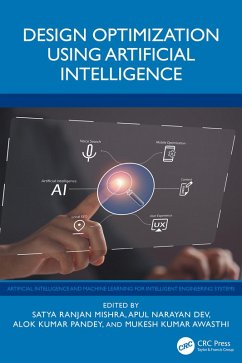
Design Optimization Using Artificial Intelligence (eBook, PDF)
Versandkostenfrei!
Sofort per Download lieferbar
52,95 €
inkl. MwSt.
Weitere Ausgaben:

PAYBACK Punkte
26 °P sammeln!
Design Optimization Using Artificial Intelligence serves as an insightful resource for understanding the transformative role of Artificial Intelligence (AI) in optimizing design processes across a variety of fields. This book explores foundational concepts, advanced methodologies, and real-world applications, offering a comprehensive guide to leveraging AI for innovative design solutions.Covering a broad spectrum of topics, the book examines algorithmic advancements, machine learning techniques, and optimization strategies that enhance design efficiency and accuracy. It delves into AI's applic...
Design Optimization Using Artificial Intelligence serves as an insightful resource for understanding the transformative role of Artificial Intelligence (AI) in optimizing design processes across a variety of fields. This book explores foundational concepts, advanced methodologies, and real-world applications, offering a comprehensive guide to leveraging AI for innovative design solutions.
Covering a broad spectrum of topics, the book examines algorithmic advancements, machine learning techniques, and optimization strategies that enhance design efficiency and accuracy. It delves into AI's applications in sustainable energy systems, biomedical innovations, image processing, cyber-security, and other critical domains, showcasing its ability to solve complex challenges with precision and creativity.
The content bridges theoretical foundations with practical implementations, incorporating case studies that highlight successful applications of AI-driven design optimization. Readers will gain valuable insights into state-of-the-art tools, programming techniques, and frameworks that drive advancements in intelligent design systems.
Features:
Targeted at researchers, engineers, and students in the fields of artificial intelligence, computational science, and engineering, this book is an essential reference for anyone seeking to understand and utilize AI in the realm of design optimization. It provides the tools and knowledge necessary to harness AI's power for innovative, efficient, and intelligent design solutions.
Covering a broad spectrum of topics, the book examines algorithmic advancements, machine learning techniques, and optimization strategies that enhance design efficiency and accuracy. It delves into AI's applications in sustainable energy systems, biomedical innovations, image processing, cyber-security, and other critical domains, showcasing its ability to solve complex challenges with precision and creativity.
The content bridges theoretical foundations with practical implementations, incorporating case studies that highlight successful applications of AI-driven design optimization. Readers will gain valuable insights into state-of-the-art tools, programming techniques, and frameworks that drive advancements in intelligent design systems.
Features:
- Explores AI-driven methodologies for enhancing design accuracy and efficiency
- Discusses advanced machine learning techniques and optimization algorithms
- Highlights AI's applications in diverse fields such as energy systems, healthcare, image processing, and cyber-security
- Includes in-depth case studies to illustrate real-world implementations of AI in design optimization
- Investigates future trends and the potential of AI to transform traditional design processes
Targeted at researchers, engineers, and students in the fields of artificial intelligence, computational science, and engineering, this book is an essential reference for anyone seeking to understand and utilize AI in the realm of design optimization. It provides the tools and knowledge necessary to harness AI's power for innovative, efficient, and intelligent design solutions.
Dieser Download kann aus rechtlichen Gründen nur mit Rechnungsadresse in A, B, BG, CY, CZ, D, DK, EW, E, FIN, F, GR, HR, H, IRL, I, LT, L, LR, M, NL, PL, P, R, S, SLO, SK ausgeliefert werden.













